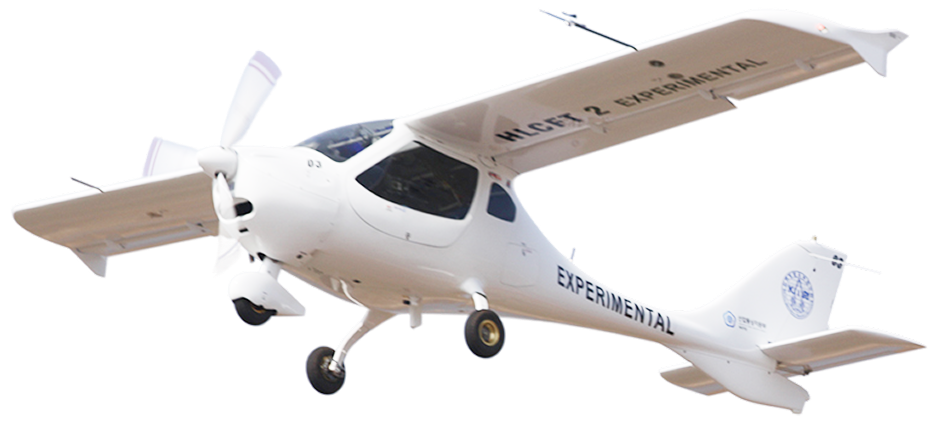Optionally Piloted Vehicle (OPV)

- Length : 8.6m
- Takeoff
Weight : 600kg (Payload: 100kg) - Maximum Speed : 222km/h
- Endurance : 2hours
- Range : 1,500km
(Mission Radius: 50km)

An Optionally Piloted Vehicle (OPV) is an aircraft capable of both manned and unmanned operation. KARI developed the technology to convert a manned aircraft into an OPV with the goal of creating a scalable unmanned flight platform that can be used to test domestically developed aerospace components under real flight conditions while supporting UAV development. An OPV allows for both remote operation and piloted flight, making it particularly suitable for consistent and repeatable flight patterns required in component testing. The project was supported by the Ministry of Trade, Industry. and Energy under the National Aerospace Component Technology Development Program.
The OPV airframe was equipped with a flight control computer, various sensors, transceivers, and antennas. Actuators controlled by the flight control computer were integrated into the existing control system, and an auxiliary generator was installed on the engine to supply power for the unmanned operation system. Given its maximum takeoff weight of 600 kg and the potential severity of accidents, redundant flight control and communication systems were implemented to enhance reliability. Vibration and temperature tests were conducted on each onboard component, along with electromagnetic compatibility (EMC) testing. A baseline ground control system for unmanned flight operations was developed, and a tracking antenna was installed.
The OPV’s maiden flight took place in 2013 at the Goheung Aviation Center. An external pilot managed takeoff and landing. After reaching a set altitude, control was handed over to a ground operator who flew the aircraft via an onboard camera feed in manual (stick) mode or initiated autonomous waypoint navigation. After verifying flight safety, test components were mounted on the aircraft for further trials. A high-precision reference system was installed to ensure accurate performance measurements, and an automated flight test system was developed to leverage the repeatability and precision of unmanned operations. Flight tests for three domestically developed components were conducted in collaboration with Hanseo University—covering AHRS and GPS/INS sensors—and at Ulsan Airport for VOR receiver trials. Post-flight data analysis confirmed the components’ suitability and performance.
The OPV has a maximum speed of 222 km/h and a flight range of up to 1,500 km. It can be efficiently deployed for missions requiring long endurance or repetitive operations such as maritime surveillance, wildfire monitoring, environmental observation, traffic management, and the detection of illegal fishing. The OPV development technology secured through this research can also be applied to retrofit outdated or underutilized military aircraft for unmanned operations—enabling their use as target drones for live-fire exercises, radar decoys, or as UAVs for search and reconnaissance in disaster response. Furthermore, this platform is being used in the development of ADS-B–based collision avoidance systems and in research on safe unmanned flight operations. This OPV research was recognized among the Top 10 Mechanical Technologies of 2014 by the Korean Federation of Mechanical Engineering Societies (KOFMES).